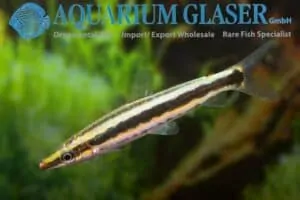Bunocephalus coracoideus
Bunocephalus coracoideus is a peaceful species that prefers a dark soil of fine sand and not too dense vegetation. Good filtration is recommended. No major requirements are imposed on temperature and water composition. Plants must be firmly anchored as this species likes to dig, especially during the mating season.
This species was officially described by Cope in 1874.
Synonyms: Dysichthys coracoideus, Bunocephalus bicolor, Dysichthys bicolor, Bunocephalus haggini.
Diet
A large amount of live food should be given as food.
Breeding Bunocephalus coracoideus
The spawning of the Bunocephalus coracoideus takes place in groups. Up to 5,000 eggs are laid on the sandy bottom. The young can be raised on the finest live food. Chopped Tubifex is eaten from 12 mm.
Video
Author
Jan Bukkems – Aquavisie
Copyright images
Michael Negrini – Pisciculture d’Estalens
Franz Steindachner (drawing)
References
On Some Batrachia and Nematognathi Brought from the Upper Amazon by Prof. Orton – Edward D. Cope
Beiträge zur Kenntniss der Flussfische Südamerika’s Steindachner, Franz, 1834-1919













Reviews
There are no reviews yet.